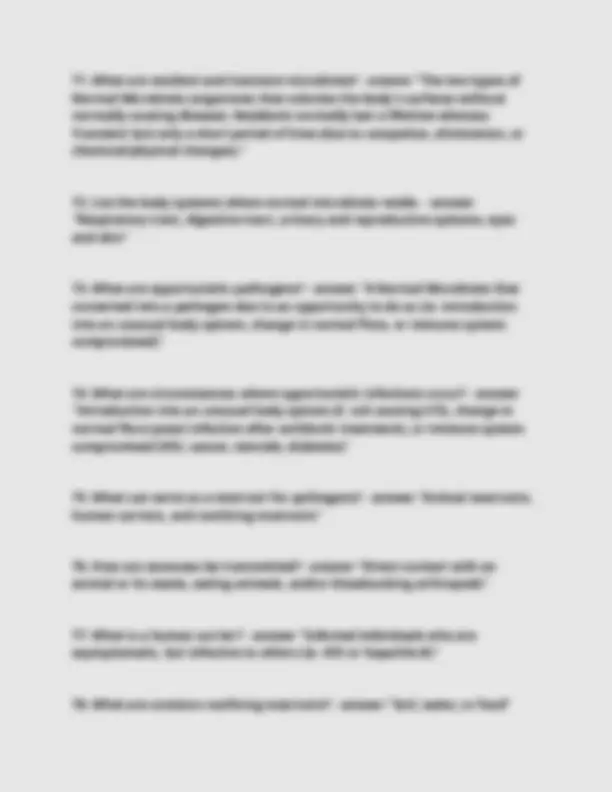











Study with the several resources on Docsity

Earn points by helping other students or get them with a premium plan


Prepare for your exams
Study with the several resources on Docsity

Earn points to download
Earn points by helping other students or get them with a premium plan
Community
Ask the community for help and clear up your study doubts
Discover the best universities in your country according to Docsity users
Free resources
Download our free guides on studying techniques, anxiety management strategies, and thesis advice from Docsity tutors
NWHSU Microbiology Cell Identification with 100% correct answers.docx
Typology: Exams
1 / 15

This page cannot be seen from the preview
Don't miss anything!










projections, adherence to one another, host cells, and environment. Shorter than flagella. Pili: hollow tubes used for DNA transfer (Conjugation). Longer than fimbriae shorter than flagella. 1-2 per cell." a. Which of these structures are known virulence factors? - answer "Glycocalyces, flagella, fimbriae, pili" b. Which of these structures contribute to biofilm formation? - answer "Glycocalyx (slime layer), fimbrae" c. Name the various types of flagella arrangements that can be used to identify bacteria. - answer "Monotrichous, amphitrichous, lophotrichous, peritrichous" d. Which stain makes glycocalyces/capsules visible in the microscope? - answer Gram stain? e. How do spirochetes move? - answer Corkscrew motion
anaerobes. Problem with O2 is that concentration is often variable/inconsistent??? e.g., Helicobacter pylori" "20. What are nitrogen, phosphorus, sulfur needed for in a bacterial cell? " - answer "N for anabolism and growth, P for nucleic acids, S as electron acceptor"
competetively bind to PABA sites preventing the formation of folic acid. Rifampin blocks RNA polymerase "Found some specific examples in the text book video. Short synopsis: Cell wall, cell membrane, ribosome, docking sites, aminoacid bond formation, DNA gyrase, enzymes are competitvely bound. RNA polymerase "
c. How can enveloped viruses enter a cell? - answer Membrane fusion or Endocytosis d. How are naked/enveloped viruses released from host cells? - answer Naked viruses are released by exocytosis or lysis a. Understand the principles of replication and what serves as mRNA as well as the template for genome replication for each type of virus (grouped by nucleic acid structure) - answer See notes Fig. 13.13... b. Be familiar with the special cases of reverse transcription and RNA replication - answer "Reverse transcription: Done by retroviruses (e.g., HIV). RNA replication: Poor proof reading and DNA repair leads to highter mutation rate." c. Know specific viruses and types of cancers they have been linked to. - answer Cancers listed in notes but not specific viruses...